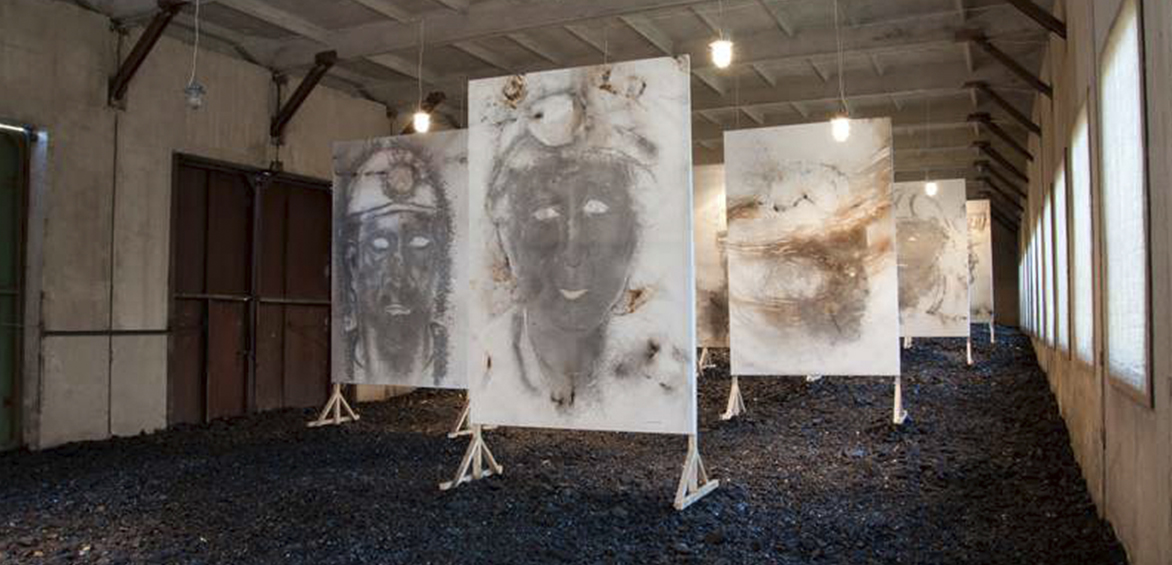Grounding: Thematic clusters

IZOLYATSIA continues its research into the Zazemlennya (Grounding) concept through an examination of prominent texts and contemporary theoretical works. We acknowledge, however, that research and theory are only part of our institutional mission. IZOLYATSIA has always distinguished itself as an institution by the quality of its critical engagement with works of contemporary art and culture. Not just theory, but also practice has been crucial to our work. Surrounding the literature that touches on Zazemlennya is a rich body of relevant artistic works and practices that explore, react to, and inform the scholarship. These works do not function only as illustrations or supporting documents in the exploration of the new human paradigm of life in the anthropocene, they are fundamental expressions and critical tools that help us examine our past, engage our present, and construct our future.
As IZOLYATSIA’s work over the past decade has shown, cultural and artistic practice has the power to change society. In a world where a critical focus on Zazemlennya becomes more relevant every day, we have already taken the theoretical step to orient our cultural and artistic work around this concept. Our first practical step following our scholarly investigations, will be to elaborate on four possible channels for works that express, encounter, problematize, and inspire discussions of Zazemlennya. Each of these channels, summarized below, will be further articulated in a series of forthcoming reports, released over the coming weeks. The reports will act as guides to IZOLYATSIA’s interest as we develop our programming throughout the IZOTURN 2020, or the period of institutional refocusing announced earlier this year.
Re-terraforming — practical and visionary works that reimagine our reality and our built environment as a space that incorporates, rather than negates, nature and ecology, thus helping us to examine intentional and unintentional alteration of landscapes and ecosystems. This includes projects and practices that act as visualizations of alternative sustainable futures, as well as those that take concrete action to transform our world with ecological and sustainable values structuring their approach and results.
Earthworks — works that fit traditionally and non-traditionally into the genre of land art as developed in the 1960–70s, but also observing historical and prehistoric examples of the human tendency to create aesthetic and symbolic constructions with natural elements at significant sites, including projects and practices that explore extremely long duration through engaging or altering landscapes. It is complementary to the re-terraforming channel in that these projects and practices emphasize the visibility of human expression through aesthetics and artistic principles, rather than correcting, submerging, or otherwise de-emphasizing the mark of humanity on the landscape.
Sustenance — works that investigate all aspects of the human relationship to sustenance as physical and social nurishment, both in terms of production and consumption in the space of the anthropocene. It is complementary to the cohabitation channel in that these projects and practices focus on consumption-based relationships with other biological entities, rather than our coexistence-based relationships in our shared biological space. This includes projects and practices that engage critically with everything from agriculture to consumerism, from processing and supply chains to gastronomy, and from the socio-geographic origins of cuisine to culinary trends like the organic and slow food movements.
Cohabitation — works that explore and reinvent the relationship between human and non-human biological entities on earth, with an emphasis on deconstructing the power dynamics set by human supremacy in the anthropocene. This includes projects and practices that both identify sustainable methods of coexistence, and experiment with collaborative contact with animals and other life forms.
These channels of investigation are in no way intended to be exhaustive or exclusive. Our research has made clear that there are many avenues for exploring our current moment as biological, social, cultural, and political subjects within the anthropocene. As we structure our research and programming using these four channels we encourage our audience to engage in our critical discussion of this process. Over the coming weeks and months we will work to construct venues for discussion of Zazemlennya in its various expressions, and we look forward to all collaborative possibilities inherent to this theme.
Photo: Cai Guo-Qiang. Exhibition 1040m Underground, Monuments on Sholders; photo by Dima Sergeev © 2011 Izolyatsia.